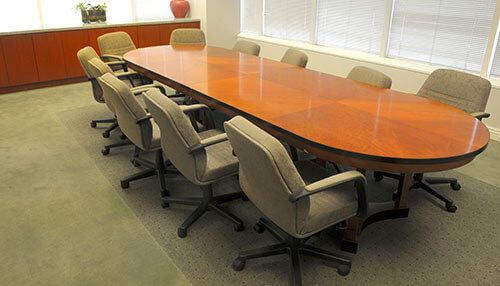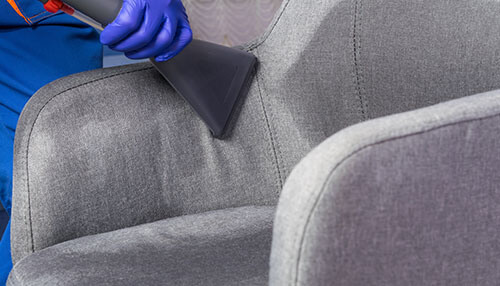What is upholstery? Upholstery is the fabric used to cover your furniture; it’s often padded to provide comfort as you utilize it. This is the exposed part of your furniture, meaning it’s exposed to dirt and dust every day. As a business, there’s a high possibility you utilize upholstered furniture in your office, maybe in the boardroom, managers’ offices, and the like. You handle several clients in a day, and you want them to have a good memory of your company as soon as they enter your building.
A stained reception chair is likely to put off cliets and make them see that you don’t care or are irresponsible. Most of them will ask themselves this question; ‘if they can’t take care of something as simple as furniture, how can I trust them with my finances or operations?’ With such a mindset, you’re likely to lose most of your clients. To avoid this, you need to maintain your commercial upholstery. How will you go about this? This article will guide you on how you can ensure your upholstery is always fresh and clean. You can consider doing the following:
Use Your Furniture For The Right Purpose
In most cases, it’s possible to keep away dirt and stains from your furniture’s upholstery by simply using it for the right purpose. For instance, if it’s your sofa set, refrain from stepping on it with your shoes, especially if they’re dirty to prevent mud stains on your sofas. Also, refrain from eating food when you’re sitting on the sofa to avoid food spills and particles from your upholstery.
In general, using furniture for the right purpose will keep stains away, keeping your upholstery fresh and clean. This will eliminate the need to invest a lot in cleaning products and services.
Hire Professionals
Cleaning and maintaining your upholstery might be challenging, especially if you aren’t an expert in the area or haven’t hired cleaners in your business. Therefore, it’s advisable to seek the services of professional cleaners that’ll cater to your office fabrics. You can visit https://www.summitfacilityservices.com/ or any other site at your disposal to see some of the professional services available.
With these services, you don’t need to worry about where you’ll source your cleaning products and what technique to use on what, among other worries. Your upholstery lifespan will likely increase with adequate care from the experts.
Regularly Clean Your Upholstery
Increasing your cleaning intervals will always keep your upholstery clean and fresh. With regular cleaning, you’ll get rid of stains in their early stages, preventing them from setting into the fabric. It’s much easier to clean recent dirt than dirt accumulated for close to a year.
Consider vacuum cleaning your fabrics weekly to remove dirt and debris and prevent buildup. However, you also need to incorporate deep cleaning into this routine; a schedule should suffice every six months or so. It might be challenging to remember to do all the clean-up work yourself when running a commercial business. A routine cleaning schedule will remind those in charge of it when to deep clean without you necessarily reminding them.
Remove Stains Immediately
Stains on your upholstery don’t always have to be an issue. This is only possible if you cater to them as soon as you spill items on your upholstery. The problem arises if you leave the stains in for too long, such that they set in. This makes them difficult to remove.
Therefore, if you spill coffee on your fabric, wipe it off with a mild cleaning solution. The immediate removal of stains will make maintaining your upholstery easier and keep your commercial space pleasant for your workers and customers.
Utilize A Fabric Protector
In some situations, it might be close to impossible to prevent the staining of your upholstery. This is mainly based on the type of business you undertake. If you’re a daycare service provider or you run a pediatrics unit, there’s a high probability of your fabrics receiving spills from children as they play around. The same applies if you handle aged people. Most of them have weak muscles, increasing the possibility of them pouring the contents of their hands on your couch or carpet.
The best way to keep your commercial upholstery fresh and clean is by investing in fabric protectors. Most of these fabric protectors are stain and water-resistant. The protector will form a thin layer so that liquids can’t pass through, and stains won’t form on your fabric. Since most come in spray foam, all you need to do is spray it generously on your upholstery.
Adopt Proper Cleaning Techniques
When it comes to cleaning your upholstery, you need to do it the right way; otherwise, you’ll end up damaging your fabric and furniture altogether. What are the techniques to avoid?
One, refrain from using too much water during the cleaning process. Too much water might stain your fabric, especially after drying. Also, the fibers might dry inadequately, creating room for fungus and mold growth on your furniture. In most cases, a damp cloth should suffice in your cleaning process.
Also, refrain from scrubbing your upholstery too much as you clean it. Doing this might spread the stain to new areas, embed the stain into the fibers, and even damage your upholstery. Instead, make it a habit of dabbing on the stain. The cleaning solution you’re utilizing is enough to dissolve the stain, eliminating the need for you to scrub your upholstery.
It’s preferable to use a white-colored cloth instead of a colored one as you dab your fabric. This is to prevent the possibility of the dye from the colored cloth from staining your fabric, especially since you’ll most likely be using acidic cleaning solutions.
Be Familiar With The Manufacturer Guide
Different upholstery fabrics require different cleaning techniques. This means that what works for leather won’t work for cotton. Utilizing the wrong cleaning technique or solution might damage your furniture and not remove your stain. Due to this disparity in needs, most manufacturers will add cleaning instructions and codes to your furniture. You’ll often find this information in the manual as you purchase your furniture or on a tag that the manufacturer will sew into the fabric.
In some cases, you’ll see codes such as S and W indicated. Without prior knowledge of these codes, you might still get stuck on how to clean your upholstery. These codes are universally known as cleaning codes, and they carry different meanings. The codes can either be W, S, WS, or X.
A W-coded upholstery means that you can utilize wet methods to clean it; this refers to water. Here, you can use hot water or steam and water-based agents to remove stains and clean up your fabrics. An S code means that you need to use solvents for proper cleaning. The solvents will break down the stains; it’s often advisable to follow up solvent-based cleaning with a vacuum cleaning to eliminate any particles left after the breakdown process. Also, with S-coded upholstery, you should keep water away from it; with water, there’s a high possibility of shrinkage.
The other cleaning code is WS, which means you can use water or solvents to clean your fabric. Here, your preference and type of stain are what govern your choice. For example, it’s much easier to use a solvent to remove an oil-based stain than water.
Last but not least is the X cleaning code. This code means that you shouldn’t utilize any cleaning solutions on the fabric. In most cases, brushing and vacuuming will suffice to ensure that X-coded fabrics are clean and fresh. When you utilize solutions, there’s a possibility of shrinkage and staining, which is undesirable.
Adopt Covers
Utilizing covers for your furniture is one of the easiest ways of keeping upholstery. The covers more or less break the direct contact between dirt and your upholstery. In case of a spill, the cover will stain, leaving your furniture’s fabric clean. Even if the spill seeps through, the stain’s extent will be minimal compared to if the spill is poured directly onto the furniture.
With covers, you don’t necessarily have to use them throughout, especially if you find them unsightly. Consider using them in scenarios that’d lead to a lot of dirt accumulating on your upholstery, such as renovations, repairs, and maintenance covers. The covers will prevent dirt and debris from embedding into your fabrics, keeping them clean. Once the activities are done, you can remove the covers and clean them.
Cleaning your cover is an easy task; you can hand wash or machine wash it. However, beware of possible shrinkage should you decide to machine wash it; use the right water temperature.
Adopt Odor Removing Practices
When it comes to maintaining upholstery, most businesses focus more on the cleaning part, leaving behind the freshness aspect of your furniture. Also, some of the cleaning solutions you’ll utilize might have strong scents that are likely to embed into the fibers of your furniture.
This means you need to adopt odor-removing practices. One common technique is using baking soda. Pour a considerable but reasonable amount into the area you’ve cleaned and leave it for some time; the longer, the better. After this, all you have to do is vacuum away the baking soda particles, and you’ll have fresh-selling upholstery.
Conclusion
From the discussion above, you’ve seen that keeping your upholstery fresh and clean is an easy process. With proper guidance, like this article gives, you don’t have to worry about losing your clients due to untidiness. However, you can achieve this by implementing the tactics given and not just knowing them. Do this, and your business and furniture investments will thank you for the years down the line for always keeping your upholstery clean and fresh.




